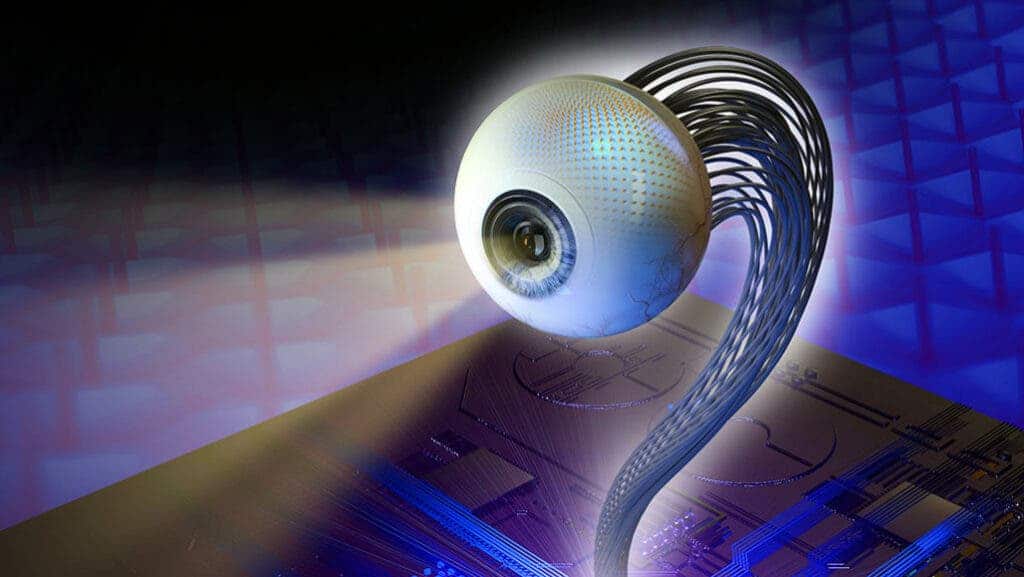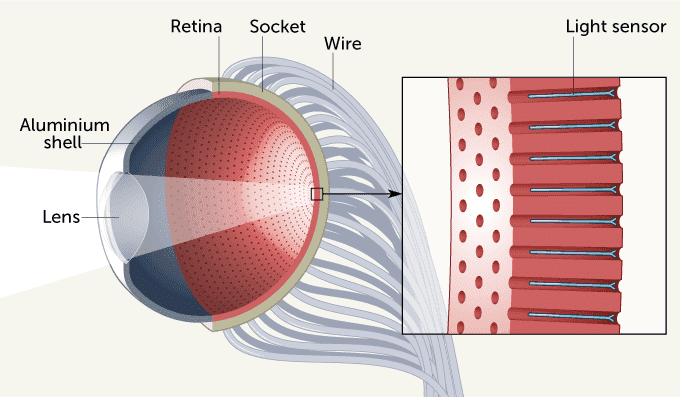Researchers have devised an artificial eye that mimics the structure of the human eye, which has important applications in robotics, scientific measurements, as well as cyborg-like prosthetics that restore vision.

The proof-of-concept, which was recently described in the journal Nature by a team led by Zhiyong Fan from the Hong Kong University of Science and Technology, is about as sensitive to light at its natural counterpart. What’s more, it even has a faster reaction time than the real thing (30 to 40 milliseconds, rather than 40 to 150 milliseconds).
The human eye is nothing short of spectacular — and much of what it’s capable of doing is owed to the dome-shaped retina, an area at the back of the eyeball that is littered in light-detecting cells.
There are around ten million photoreceptor cells per square centimeter, enabling a wide field of view and excellent resolution that has yet to be replicated by any man-made technology.
For many years, scientists have sought to replicate these characteristics in synthetic eyeballs. However, such efforts proved extremely challenging due to the inherent difficulties in mimicking the shape and composition of the human retina.
Fan and colleagues devised a hemispherical artificial retina, measuring only two centimeters in diameter and containing densely packed, light-sensitive nanowires made from a perovskite — a promising material that is very popular in solar cell manufacturing. The purpose of these nanowires is to mimic the photoreceptors of the human eye.

The artificial eye’s hollow center is filled with a conductive fluid, whereas the human eye is filled with a clear gel called vitreous humour.
In an experiment, the artificial eye was hooked up to a computer and could “see” by reconstructing the letters ‘E’, ‘I’, and ‘Y’.
However, this is a far cry from the capabilities of the biological eye. The array consists of just 100 pixels, where each pixel corresponds to three nanowires.
This is a proof of concept, though, and Fan is confident that his design can be scaled so that the artificial eye can obtain a resolution ever higher than the human eye. According to Fan and colleagues, the density of nanowire can be enhanced to cover ten times the number of photoreceptors in the human eye.
Each nanowire could theoretically function as a small solar cell, which means that artificial eyes might not require an external power source as the researchers’ device currently requires.
The researchers envision applications in scientific measurements and advanced robotics. But, theoretically, the artificial eye could also be connected to an optic nerve, enabling the brain to process information received from the device like it would with a real eye. This latter prospect, however, is years and years away — but the prospect is still incredibly exciting.









